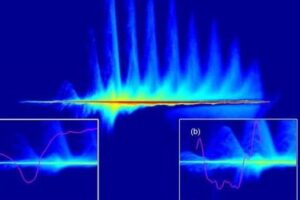
Most of the normal matter in the universe is contained in stars, planets and other massive objects, subjected to crushing pressure and high temperature. Such conditions also occur during explosions and impacts, and in nuclear energy systems.
In addition, the limits of the survival of life at extreme conditions, such as, in the depths of ocean and on extraterrestrial worlds, remains of central interest.
This research area covers the nature of high-pressure and high-temperature phenomena and their origin in basic physical principles, and focuses on how new physical properties emerge at extreme conditions, such as under very high pressure, very high/low temperature, and at high atomic density.
In extreme physics, various principles such as thermodynamics, condensed matter physics, plasma physics, astrophysics, and mechanics are involved.
Our aim is to understand how pressure and temperature generate unusual states of matter, crystallize exotic structures, form shock waves, produce energy via nuclear fusion, and lead to exotic requirements for life (in a microbiological context).
In this research area, we discuss the transformation of simple materials subjected to extreme conditions, high-pressure crystal structures, the nature of molecules at high density, plasmas and electronic transformations, and conditions for life.